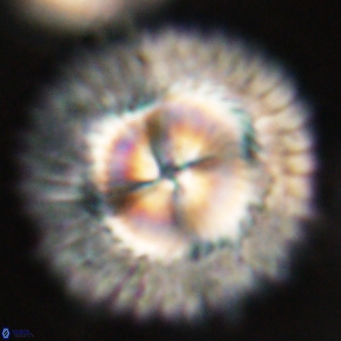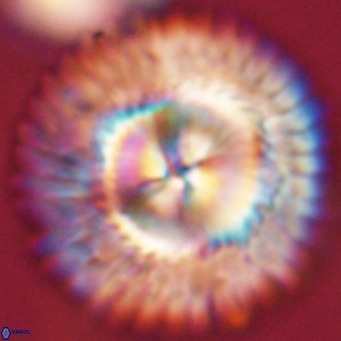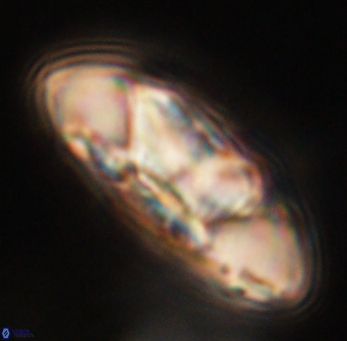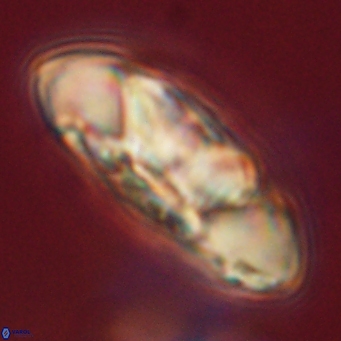Carlamuelleria katapliktikos
Carlamuelleria katapliktikos Varol, 2023
Huge (12.0–17.0 μm) species of Carlamuelleria possessing a non-birefringent distal shield, a broad tube cycle with a serrated periphery and a vestigial proximal shield. In plan view, the diameter of the tube cycle is greater than the width of the shield. The combination of the tube cycle and vestigial proximal shield creates a brandy goblet-shaped structure in side view.
From Greek katapliktikos, meaning 'amazing, stunning'-referring to its attractive appearance.
Diameter of the distal shield: 15.34 μm (measured in plan view in phase-contrast), the maximum thickness of the distal shield: 5.93 μm (measured in phase-contrast), the diameter of the tube cycle: 8.31 μm (measured in plan view in phase-contrast).
The distal shield is lenticular and has a less convex proximal side with a shallow depression. The distal shield consists of 30-45 segments. The tube cycle with a serrated periphery is flush with the distal end of the distal shield.
In cross-polarised light, the inclined (oblique) extinction line is dextrogyre distally (Plate 6, Figs. 9–10 in Varol, 2023) but laevogyre proximally (Plate 6, Fig. 11–12 in Varol, 2023). The blue interference colours are diagonally aligned on the tube cycle with the gypsum plate inserted. On the disc, the blue interference colours are aligned slightly off the horizontal axis on the distal side (Plate 6, Figs. 10 in Varol, 2023) but slightly off the vertical axis on the proximal sides (Plate 6, Figs. 12 in Varol, 2023). The entire specimen appears birefringent in side view.
Carlamuelleria katapliktikos is easily separated from other species of Carlamuelleria by its large size (>12.0 μm) and broad tube cycle (its diameter greater than the width of the shield). Carlamuelleria katapliktikos differs from Davidbukrya in having a vestigial proximal shield, whereas Davidbukrya lacks a shield. Noelia species differ from Carlamuelleria katapliktikos by having a distally protruding tube cycle.
Varol, O. 2023. New paleocene calcareous nannofossils: Carlamuelleria, Davidbukrya, Mauriceblackia, Noelia and Senelia. Marine Micropaleontology. 180: 1-41.



